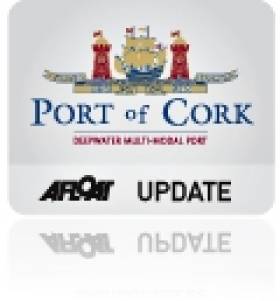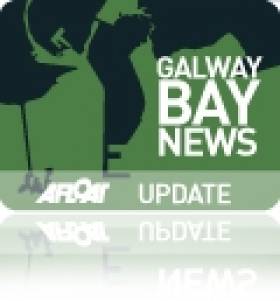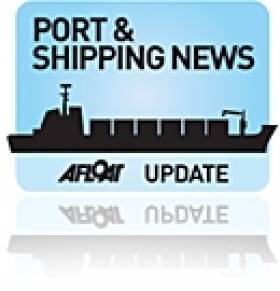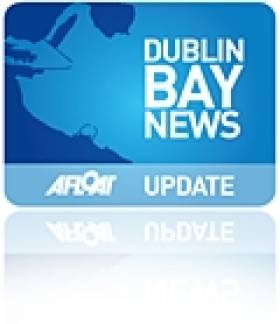Displaying items by tag: ferry
Port of Cork Traffic Up 10% in 2010
While all sectors at the Port of Cork experienced a challenging period during 2010, the end of year total trade traffic shows an increase. Total trade in 2010 through the Port of Cork amounted to 8.8 million tonnes, an increase of 8.6% compared to 2009.
One area of increase which has a very positive effect on the local economy is the increase in exports from the Port. Total exports at the Port of Cork have remained strong increasing by 10% to date, in comparison to 2009. Exports are a key driver in the successful recovery of the Irish Economy and the Port of Cork is committed to continuous support in the growth of international trade for both current and future economic prospects.
The container business at the Port of Cork has remained constant with over 150,000 TEU handled in 2010. Animal feed stuffs, fertiliser and other trades have shown a significant increase in 2010. Oil traffic has shown a slight increase of 3.5% as a consequence of lower levels of economic activity; however it continues to be a significant part of the Port of Cork business.
Commenting on the end of year trade traffic results, Mr Dermot O'Mahoney Chairman of the Port of Cork said: "The Port of Cork is pleased to announce that total trade traffic in 2010 has shown an 8.6 % increase on 2009 traffic. With 98% of all goods imported or exported from Ireland moved by ship, the importance of ports to our economy is vital. The Port of Cork is a key link to the continued economic success of the entire Munster region and the challenges now for the Port of Cork, is to continue to develop. This requires that we be visionary and seize opportunities presented by emerging trends and logistic supply changes."
He continued: "While the next four to five years will be challenging for us all, we need to continue to promote the fact that Ireland is an excellent investment location and is well placed to capitalise on growing global markets."
52 cruise liners visited the Port of Cork during 2010 bringing over 100,000 passengers and crew to the region. According to research carried out by UK consultants GP Wild, the average in-transit spend per passenger, while visiting an Irish port is €73. This is a significant contribution towards the local tourism economy.
Ferry passenger numbers though the port also increased mainly due to the welcomed re-commencement of the ferry service linking Cork with Swansea. The weekly ferry service from Cork to Roscoff with Brittany Ferries also had a successful year.
In 2010, the Port of Cork developed a recreational strategy to improve the marine leisure facilities around Cork Harbour. The first project carried out was the construction of a 100m marina on South Custom House Quay. This long term investment for the city of Cork has already proven to be very popular among local boats and visiting boats. The Port of Cork expects 2011 to be even busier.
Buzzing Across Galway Bay?
A new ferry route has been proposed for Galway Bay, between Ballyvaghan at the north end of the Burren in County Clare, and Galway City in the famous Bay's northeast corner writes WM Nixon. The Clare village is at the head of its own bay within the shelter of Black Head, Galway Bay's southwest headland. A pretty place, Ballyvaghan is heavily reliant on providing hospitality for visitors drawn to the unique attractions of the Burren region, but the locals feel that the traffic holdups in the 50 km drive around from Galway can act as a disincentive for tourists.
Then too, the proposed 12-seater fast ferry – which could make the eleven mile crossing in 30 minutes or less – would be an attraction in itself. Having savoured the convenient waterfront charms of Galway City – from which they can already take popular boat trips on Lough Corrib – it's easy to believe that visitors would enjoy a quick sea voyage to somewhere entirely different.
Galway Bay Hop spokeswoman Gwen Ryan of Ballyvaghan claims that the ferry would also be useful for commuters travelling daily to work in the thriving commercial hub around the city. Then too, the fact that the ferry is of a manageable size means that it could also be used for group hire to visit many of the other small tidal ports around Galway Bay such as Kinvara and Barna, and perhaps even take in the legendary oyster pub Moran's of the Weir near Kilcolgan.
The idea first emerged from a Community Think-in at Ballyvaghan in the Spring of 2010, and if a feasibility study gives the right signals, the service could be operational by next year.
Cape Clear Ferry Service Awarded
The ferry service contract for Cape Clear in Co. Cork has been awarded to the company, Thar Tonn Teo.
The 'Island Princess' will be used as the main vessel for the service from the middle of March 2011 onwards. The boat 'Tranquility' will be used until then. The contract will come into effect from February 1st 2011 and will be operational for eight years until 31st of January 2019. The contract is worth €2.65m in total.
This contract was awarded as a result of a competitive tendering process that was initiated by the Department of Community, Equality and Gaeltacht Affairs. As he announced the winning contract, the Minister Pat Carey said, "I am very pleased that a long-term agreement has been put in place which will ensure that the people of Cape Clear have a ferry service in the years to come and I wish the new service every success."
Dun Laoghaire Harbour Invites Public's Views on Masterplan
The Dun Laoghaire Harbour Company has invited the public to submit their ideas about the future of the harbour. A masterplan is to be developed so to address the changing emphasis of the harbour from a commercial harbour to a recreational harbour and the impact of change in the profile of ferry sailings on the Dún Laoghaire - Holyhead route. For further details please logon HERE In addition a map of the harbour, showing the extent of the area concerned.
Irish Sea Newcomer Sells Routes To Stena
The sale covers the routes between Belfast and Birkenhead (Liverpool) and Belfast-Heysham. Operating on the northern Irish Sea routes are two 13,000 gross tonnes Japanese built freight ro-ro ferries sisters Hibernia Seaways and Scotia Seaways in addition to two chartered ro-pax vessels as part of the transaction.
Niels Smedegaard, CEO of DFDS, said: "The Irish routes we took over in conjunction with the purchase of Norfolkline have, in spite of the recent impressive efforts by everyone employed on the routes, in the last two years lost more than thirty million euros. Given the depressed economies a turnaround of the activities, without structural solutions, is not realistic. On this basis, we have decided to scale back our activities and sell the two routes to and from Belfast."
In the deal Stena Line, the Swedish owner will also take control of port terminals in Belfast, Birkenhead and Heysham. The majority of shore-based staff at these port terminals will be transferred to Stena, maintaining their current conditions.
DFDS and Stena Line will share staff at these locations during an agreed transitional period at the end of which DFDS will establish their own agency operations at Birkenhead and Heysham.
The new arrangement will see DFDS focusing on its other services between Dublin to Birkenhead (which includes passengers) and from Dublin to Heysham. Italian built sisters ro-pax sisters Liverpool Seaways and Dublin Seaways currently operate on the Dublin-Birkenhead route and the 120-trailer freight-ferry, Anglia Seaways maintains serving the Heysham route. Operations at the Dublin Port terminal are not affected by this transaction.
DFDS will continue to review their strategic and operations routes in Dublin, which is expected to be completed in the first quarter of 2011. The Danish owned shipping and logistics transportation company operate an extensive route network throughout the Irish Sea, North Sea and Scandinavia.
Fire on Board Stena Ferry
Two lifeboats proceeded to the Stena Pioneer this afternoon after crew on the ferry issued a mayday call reporting a fire in their engine room whilst they were on passage to Fleetwood on the Irish Sea. A helicopter was also placed on standby.
Liverpool Coastguard received the mayday at 3.36 pm and made contact with crew on board the vessel, who reported that they still had full power and steering but that there was a fire in the engine room that they were fighting with their on board fire fighting equipment.
Liverpool Coastguard sent lifeboats from Fleetwood and Barrow to the scene. The fire was reported as out at 4.30 pm and the ferry is now docked at Fleetwood.
Liverpool Coastguard Watch Manager Paul Parkes said:
"A fire on a ferry 12 miles out with 46 people on board could potentially turn into a very serious incident, and so we acted quickly to send rescue resources to its aid. Luckily, the fire was dealt with using on board equipment and so the lifeboats escorted the ferry into Fleetwood where it was met by Lancashire Fire and Rescue service and an MCA surveyor."
































































